Immigrant, pioneer farmer, miller, landowner, merchant, Columbia Township trustee, Hamilton County commissioner
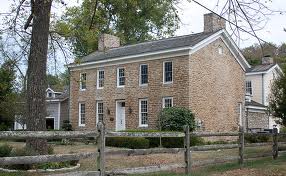
John Elliott was born in Northern Ireland to Scottish parents in 1762. At age 22, he came to America aboard the ship “Lazy Mary.” Family tradition says that he was sent by his father to see what America was like.
It was in 1785 that the rest of the Elliott family sailed from Londonderry, Ireland, on the “Faithful Steward.” The group consisted of the father, five daughters, and two sons, Simon and William, accompanied also by a number of cousins named Stewart and Lee. When their ship reached the shore off Mahogany Bay in New Jersey, it was driven by a storm onto the rocks, and many passengers perished. Family history notes that chests full of the family’s valuable goods were washed ashore, but they were stolen by land pirates of the coast.
A history of the Elliott family (1911) records a ballad sung about the shipwreck:
The Elliotts and the Lees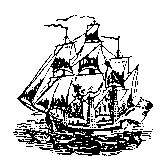
And Stewarts of great fame,
They may lament and mourn
For the lands they’ve left behind.
They may lament and mourn
As long as they have days,
For their friends and relations
Lie in Mahogany’s bays.
The two brothers, Simon and William, made their way to Pennsylvania, where John Elliott had settled. They later married and moved their families to Illinois and Ohio. While in Pennsylvania, John had married Mary Miller, of German descent, in 1786, and moved with his wife and son three years later to Columbia (now Lunken Airport) in Ohio.
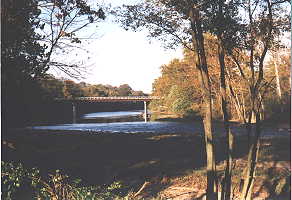 In 1800 Elliott purchased 112 acres (for $450) for a millsite on the Little Miami River at the mouth of Sycamore Creek. Until they could build a cabin for their growing family of four children, an early history states that they lived in an immense hollow sycamore tree eleven feet in diameter on their property. Tradition says that it was from this huge tree that Sycamore Creek got its name.
In 1800 Elliott purchased 112 acres (for $450) for a millsite on the Little Miami River at the mouth of Sycamore Creek. Until they could build a cabin for their growing family of four children, an early history states that they lived in an immense hollow sycamore tree eleven feet in diameter on their property. Tradition says that it was from this huge tree that Sycamore Creek got its name.
The Elliotts cleared, fenced, and farmed their land. They planted an orchard near their cabin; and, using stones from the nearby river, they built a large two-story house with thick walls and heavy beams of oak. It took two years to complete, and the two youngest of their six children (William, b. 1802 and John, Jr., b. 1806) were born in the house. They joined their oldest brother Simon, who came to Ohio with his parents, Elcy (b. 1791), Sarah (b. 1792), and Isabella (b. 1798). One source says that there were three other children who died in infancy, two being buried at Columbia, and one at the Sycamore Church (site of today’s Green Acres structure.)
The dense forest along the river and in the surrounding country was inhabited by many Native Americans, and the family history claims that on more than one occasion during an uprising the Elliotts were forced to gather what they could of their belongings and take refuge at Fort Columbia.
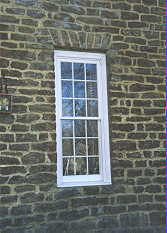 John Elliott built a grist mill in 1810 on his property near Sycamore Creek. He was in partnership with Henry Crist, Cornelius Snider, and Benjamin Sears (the millwright.) A dam was built across the Little Miami, and the millrace later also powered a saw mill, a wool carding mill, and a distillery built on the site. An old section of what is now called Spooky Hollow Road was then called “the road to Elliott’s Mills.”
John Elliott built a grist mill in 1810 on his property near Sycamore Creek. He was in partnership with Henry Crist, Cornelius Snider, and Benjamin Sears (the millwright.) A dam was built across the Little Miami, and the millrace later also powered a saw mill, a wool carding mill, and a distillery built on the site. An old section of what is now called Spooky Hollow Road was then called “the road to Elliott’s Mills.”
Elliott was elected a Columbia Township Trustee in 1803, and he served as a Hamilton County Commissioner from 1812-1820. As their six children matured and married, they and their children settled either in the Sycamore/Montgomery/Symmes Township area or in Illinois or Iowa. As a matter of local note, his daughter Elcy married Nathaniel Terwilliger, a “millwright and farmer.” The Terwilliger name is well-known in Montgomery, Ohio, as Nathaniel was one of the founders of that community and the owner of a building on Cooper Road there that has been called “Terwilliger’s Tavern.”
The Elliott family suffered financial difficulties in the 1820’s over unpaid debts, which threatened their ownership of the land on the Little Miami. Parcels of the property changed hands over the next 20 years, and in 1841 it was sold to Williams Hamilton, miller. Subsequent owners of portions of the Elliott land were listed as Silas Hutchinson, Nathanial Paxton, Alfred Wild, Edward Fuller, John Clement, Henry Anderson, and James Hauck. In 1898 the house was sold to the Sterrett family. (See the Elliott House page in Historical Sites.)
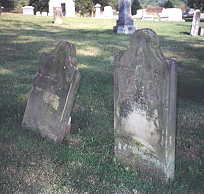 John Elliott died in 1843 at age 82, having buried his wife three years earlier in Remington Cemetery on the hill above the west side of Spooky Hollow Road. Their children purchased a family plot in the Miamiville (Evergreen) Cemetery in 1867, and John and Mary’s graves were moved there in 1922.
John Elliott died in 1843 at age 82, having buried his wife three years earlier in Remington Cemetery on the hill above the west side of Spooky Hollow Road. Their children purchased a family plot in the Miamiville (Evergreen) Cemetery in 1867, and John and Mary’s graves were moved there in 1922.
Sources for this article include The Elliott Families 1762 – 1911 by Simon Elliott, materials of the Indian Hill Historical Society, and various sources from the internet.
